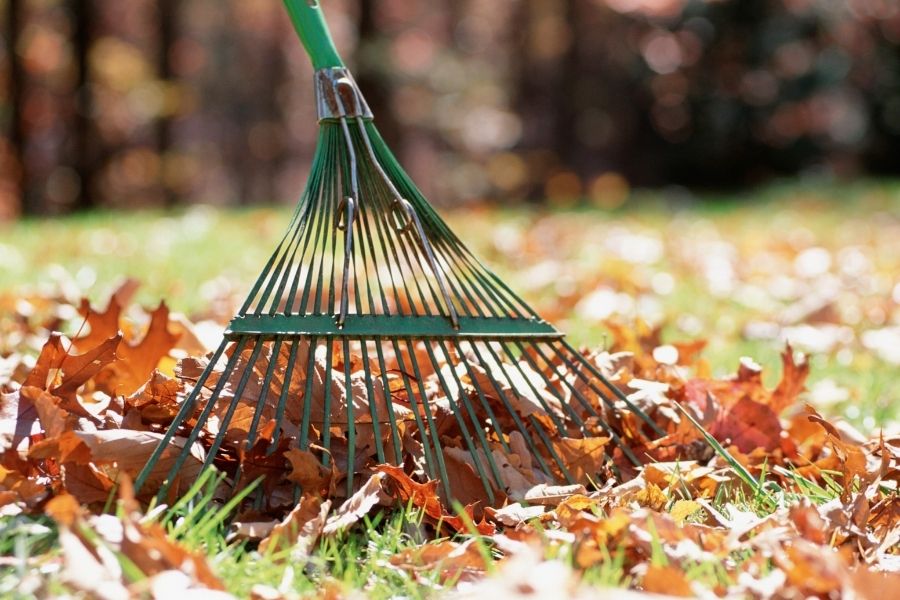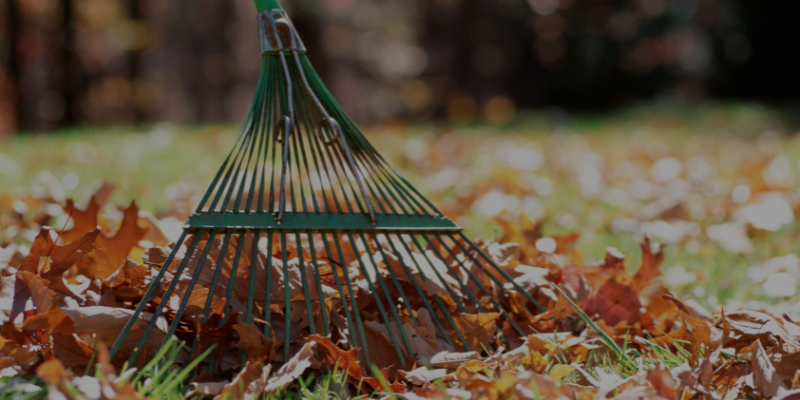Fall is the Prime-Time to Impact your Lawn’s Health and Beauty
Fall’s cooler temperatures and consistent rainfall provide the ideal conditions for turf to recover from summer stress. After a long, hot summer of lawn care, many homeowners give their lawn a back seat when autumn rolls around. But outdoor work that’s done as the seasons turn can determine whether a lawn just survives the winter – or actually thrives come spring. With proper care in the fall, root systems can be made stronger, soil quality improved, and your lawn can be ready for its healthiest year ever!

Aeration pulls small plugs from the lawn, loosening soil and creating small pathways for water and nutrients to reach the grass root systems.
1. Aeration
A hot, dry summer can compact soil, which prevents water, nutrients, and air from reaching the grass’s roots. Aeration is the process of removing cork-size plugs from the soil, which opens up small pathways that allow water and nutrients to be more thoroughly absorbed in a lawn. The best time to aerate a lawn is typically in the fall when soil is still relatively warm from the summer sun.

Bare lawn patches and thin spots should be overseeded and watered regularly during the fall.
2. Overseeding
The next lawn renovation step after aeration is overseeding. Overseeding fills in thin or bare patches of the yard – which leads to better lawn density and lawn color. Adding a mixture of grass varieties that are more resistant to pests and disease in the fall can be helpful to lawn health. Cool fall temperatures combined with consistent watering are paramount to assisting your new grass growing from seed to green.
3. Fertilization
Fertilizing in the fall introduces nutrients your grass needs to develop strong root systems – and nitrogen is at the top of the list. Nitrogen is essential to fall fertilization as it promotes rapid growth while helping grass store the energy it needs to survive winter dormancy. In short, fall fertilizing gives grass a healthy head start into a spring full of green!

Leaf removal keeps lawns healthy by preventing suffocation, disease, and mold – allowing grass to thrive during fall’s prime growing season.
4. Leaf Management
Fall leaf removal may be most everyone’s least favorite autumn chore, but it’s essential for keeping lawns healthy. A thick layer of leaves blanketing a lawn can not only suffocate grass, but also trap moisture within the grass that may lead to disease and mold growth – conditions that can be difficult – and expensive – to resolve. Regular leaf removal ensures turf can fully benefit from fall’s ideal growing conditions.

Mulch insulates roots during the winter and improves both plant and soil health.
5. Don’t Forget the Landscaping!
Landscape beds also deserve attention in the fall. Adding fresh mulch to beds helps insulate roots during cold months and retain much-needed hydration. Mulch also helps improve soil health as it breaks down. Perennials should be pruned back, dead branches should be removed, and overgrown shrubs should be trimmed – not only to tidy up after summer, but to promote fuller, healthier growth in the spring.
6. Fall is a Great Time to Plant Trees and Shrubs!
Fall also provides ideal conditions for certain landscape upgrades, such as the installation of large shrubs and trees! Click here to see Heinen’s Fall Landscape Design guide!
Need a Hand with Fall Lawn Renovation? Heinen Can Help!
Fall lawn preparation is important, but it can also be time-consuming and labor-intensive. If you need a hand with your fall lawn care, the outdoor living professionals at Heinen are here for assistance!
With more than 35 years of experience, Heinen’s turf experts know exactly what it takes to prepare a lawn for winter. From full fall lawn renovation to fertilization, leaf management, and landscape care, Heinen experts specialize in turning worn-out yards into beautiful and lasting (even magazine-worthy) lawns!






